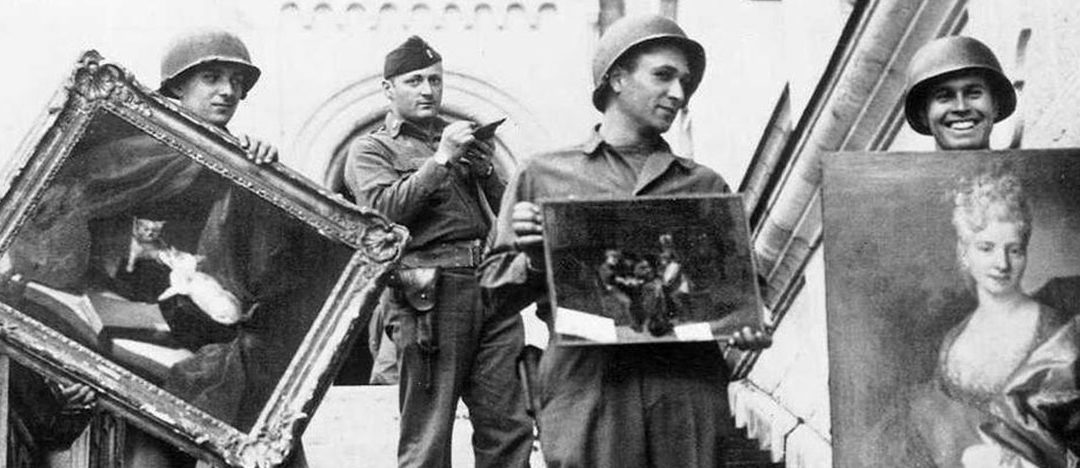Have you heard the amazing story of the Monuments Men? George Clooney directed and starred in a recent movie adaptation based on the book The Monuments Men: Allied Heroes, Nazi Thieves, and the Greatest Treasure Hunt in History by Robert M. Edsel. The real-life Monuments Men (and omen) were a group of mostly-middle aged professors, historians and museum curators who left their comfortable careers to recover priceless works of art on the front lines of World War II. While the story of how they tracked and discovered the Nazi’s stashes of treasure is fascinating, as shipping professionals we wondered what happened next? How did they remove and transport priceless works of art from a salt mine high in the Austrian Alps in the midst of post-war chaos?
The man responsible for the operation was George Stout. Played by Clooney in the film, Stout was one of the most dedicated operatives. Before the war he had pioneered new art conservation techniques at Harvard’s Fogg Museum and he had spent the year before the discovery traveling along enemy lines executing recovery efforts in a stolen German Volkswagen.
In May 1945 Captain Robert Posey and Pfc. Lincoln Kirstein uncovered an immense stash of cultural relics at Altaussee, an ancient salt mine. Stout soon joined them there. The Nazis had identified the constant cool conditions and deep mountain location as the perfect place to stash looted treasures intended for Hitler’s sprawling museum dedicated to his plunders.
Nazi records indicate the tunnels held the following:
- 6,577 paintings
- 2,300 drawings or watercolors
- 954 prints
- 137 pieces of sculpture
- 129 pieces of arms and armor
- 79 baskets of objects
- 484 cases of archive materials
- 78 pieces of furniture
- 122 tapestries
- 1,200-1,700 cases books
- 283 cases with unknown contents
Three days before the Monuments Men entered the tunnels the entire mine was scheduled to be blown up as the Nazi’s retreated. Thankfully local Austrians removed crates of explosives to save the mine and spared all of the treasures. Stout originally planned the removal and packing process to proceed over a year. He was then told the mine lay in Soviet control and anything remaining in the tunnels by July 1 would belong to Joseph Stalin.
So began one of the greatest and most delicate shipping challenges of our time. Post-war communication systems were spotty and the collecting point was 150 miles away in Munich. There were too few trucks and they often broke down. Stout had crews of men working nearly around the clock in the rain without enough rations. Packing materials were so scarce they were reduced to using German sheepskin coats and gas masks.
Thankfully the boundary disputes continued past July 1 until July 19, so the crew was given more time to pack and ship priceless art such as Michelangelo’s Madonna and Child statue, which Stout personally packed, carted it to the mine entrance and delivered to Munich. All told, 80 truckloads of priceless art was rescued from the mine including 1,850 paintings, 1,441 cases of paintings and sculpture, 11 sculptures, 30 pieces of furniture and 34 large packages of textiles. There was more, but the team had to leave Austria as the Soviets took over.
An excellent article by Jim Morrison in Smithsonian Magazine gives additional insight into the logistical nightmare that immediately followed the discovery. Also, The Rape of Europa: The Fate of Europe’s Treasures in the Third Reich and Second World War by Lynn H. Nicholas delves into the incredibly complex process of determining where and to whom the art was returned. The story of the Monuments Men is incredibly inspiring as these academics risked their lives over and over on the front lines of battle to protect and defend 1,000 years of art and culture.
Resources
http://en.wikipedia.org/wiki/The_Monuments_Men
http://www.smithsonianmag.com/history/true-story-monuments-men-180949569/?no-ist

